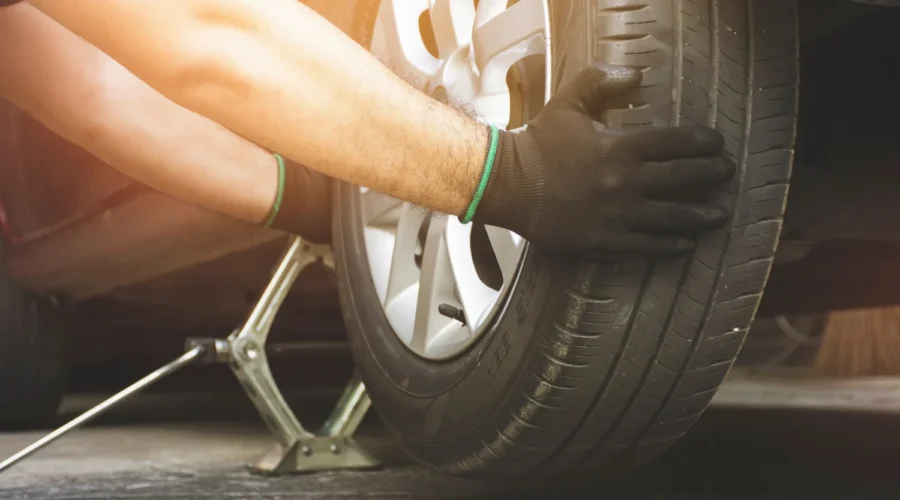How Often to Rotate Tires: Your Complete Guide to Tire Maintenance
Understanding how often to rotate tires is crucial for every vehicle owner who wants to maximize tire life, improve safety, and save money on replacements. Proper tire rotation is one of the most cost-effective maintenance practices that can extend your tire’s lifespan by up to 30% while ensuring optimal vehicle performance.
What Is Tire Rotation and Why Does It Matter?
Tire rotation involves moving your tires from one position to another on your vehicle to ensure even wear patterns. Since different tire positions experience varying levels of stress, braking force, and steering input, rotating them regularly helps distribute wear more evenly across all four tires.
The benefits of regular tire rotation include:
- Extended tire lifespan
- Improved fuel efficiency
- Better traction and handling
- Enhanced safety on the road
- Cost savings on premature tire replacement
How Often Do You Need to Rotate Tires?
The general rule for how often do tires need to be rotated is every 5,000 to 7,500 miles, or approximately every six months. However, this timeline can vary based on several factors including your driving habits, vehicle type, and tire specifications.
Standard Vehicle Recommendations
For most passenger cars and light trucks, the answer to how often do you need to rotate tires follows the manufacturer’s recommended maintenance schedule. Most automotive experts and tire manufacturers suggest rotation every 5,000-6,000 miles, which typically coincides with regular oil change intervals.
All-Wheel Drive Considerations
How often to rotate tires AWD vehicles is particularly important because all-wheel drive systems put additional stress on tires. AWD vehicles should have their tires rotated every 3,000 to 5,000 miles due to the increased complexity of power distribution and the potential for uneven wear that can damage the drivetrain system.
Factors That Influence Rotation Frequency
Several variables affect how often are you supposed to rotate your tires, and understanding these can help you determine the optimal schedule for your specific situation.
Driving Conditions and Habits
- City vs. Highway Driving: Stop-and-go city traffic causes more wear than highway cruising
- Aggressive Driving: Hard acceleration, braking, and cornering increase tire wear
- Road Conditions: Rough, unpaved, or construction-heavy routes accelerate wear
- Climate: Extreme temperatures and seasonal changes affect tire performance
Vehicle-Specific Factors
Different vehicle types have varying rotation needs. Sports cars with performance tires might need more frequent rotation, while vehicles with different front and rear tire sizes may have limited rotation options.
Signs Your Tires Need Rotation
Even if you’re following a regular schedule for how often to have tires rotated, watch for these warning signs that indicate immediate attention is needed:
Visual Wear Indicators
- Uneven tread depth across tires
- Excessive wear on tire shoulders or center
- Visible wear bars becoming flush with tread
- Cupping or scalloping patterns on tread
Performance Changes
- Vehicle pulling to one side while driving
- Increased road noise or vibration
- Decreased fuel economy
- Reduced traction in wet conditions
Professional vs. DIY Tire Rotation
Many vehicle owners wonder how often do I need to rotate my tires and whether they should do it themselves or visit a professional. While tire rotation can be a DIY task for mechanically inclined individuals, professional service ensures proper torque specifications and pattern selection.
When to Choose Professional Service
- AWD or 4WD vehicles requiring specific patterns
- Run-flat or specialized performance tires
- When you lack proper tools or experience
- If additional services like balancing are needed
DIY Considerations
If you choose to rotate tires yourself, ensure you have:
- Proper jack and jack stands
- Torque wrench for wheel nuts
- Knowledge of correct rotation pattern
- Ability to check tire pressure and condition
Different Rotation Patterns Explained
The rotation pattern depends on your vehicle’s drivetrain and tire type. Understanding these patterns helps answer how often do you have to rotate your tires effectively.
Common Rotation Patterns
Front-Wheel Drive: Move front tires straight back, cross rear tires to front Rear-Wheel Drive: Move rear tires straight forward, cross front tires to rear
All-Wheel Drive: Use manufacturer-specified patterns or X-pattern rotation Directional Tires: Front-to-back only on same side
Cost Considerations and Long-Term Savings
Regular tire rotation is an investment in your vehicle’s performance and safety. While there’s an upfront cost for professional service (typically $20-50), this expense is minimal compared to premature tire replacement costs.
Financial Benefits
- Extended tire life by 20,000-30,000 miles
- Improved fuel efficiency
- Reduced risk of blowouts or accidents
- Maintained vehicle resale value
Frequently Asked Questions
Q: How often should I rotate tires on a new car?
A: Follow the manufacturer’s recommendations from day one, typically every 5,000-7,500 miles, to establish even wear patterns early.
Q: Can I rotate tires with different tread depths?
A: It’s best to rotate tires with similar tread depths. If differences exceed 2/32″, consider replacing the more worn tires first.
Q: Do I need to rotate tires if I have a spare?
A: Including a full-size spare in rotation can extend the life of all five tires, but it’s not always necessary for temporary or compact spares.
Q: What happens if I don’t rotate my tires regularly?
A: You’ll experience uneven wear, reduced tire life, poor traction, and potentially unsafe driving conditions, leading to more frequent and expensive tire replacements.
Conclusion
Understanding how often to do tire rotation is essential for vehicle safety and cost management. Following a regular rotation schedule every 5,000-7,500 miles (or more frequently for AWD vehicles) will maximize your tire investment while ensuring optimal vehicle performance.
Remember that tire rotation is just one aspect of comprehensive tire maintenance. Regular pressure checks, alignment services, and visual inspections work together with proper rotation schedules to keep your vehicle safe and efficient on the road.



